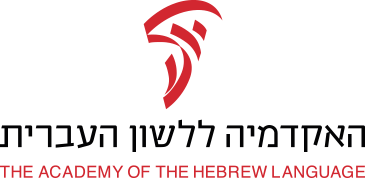
Modern Hebrew has always drawn upon linguistic forms from multiple historical strata of Hebrew; into this linguistic mélange have also come, more recently, forms that have developed in the living, evolving language. We see our primary role in the field of grammar as adjudicating in cases of conflict – e.g., among forms inherited from different periods of Hebrew or between a new form that has arisen in contemporary Hebrew and those extant in earlier strata of the language.
The Academy’s approach in matters of grammar is to seek the middle road between blanket adoption of current usage and rigid adherence to the language of the historical sources. The decision-making process begins with the Grammar Committee, which discusses the issues in depth and makes recommendations. The recommendations are then submitted to the plenum for approval by vote. Under Israeli law, the plenum’s decisions about the Hebrew language are binding upon Israeli government bodies and educational institutions.
The basis for all Hebrew grammar – and especially morphology – is the Bible and its vocalization; indeed, the vocalized Biblical forms remain the default standard to this day. In some cases, though, the Bible offers only a few anomalous forms or provides no testimony at all. The Academy considers not only Biblical Hebrew but also the evidence from post-Biblical Hebrew, including oral traditions, and on some grammatical points has ruled against Biblical norms. Over time the Academy has given increasing weight to the language of contemporary speakers, recognizing the natural evolution of Hebrew as a living language.
Furthermore, the Academy strives to make the grammatical system both orderly and simple. To that end, the Academy sometimes rejects Biblical or other classical attested forms in the interest of simplicity and consistency. With regard to compensatory lengthening, for instance, the Academy rejected all of the exceptional Biblical forms – such as נֵהַלְתָּ (nehalta, ‘you led,’ Exod. 15:13, instead of נִהַלְתָּ, nihalta) and אֵחַר (eẖar, ‘he delayed,’ Gen. 34:19), in which the presence of compensatory lengthening (e in lieu of i) violates the rule – as well as the form מִאוּס (mi'us, ‘revulsion’), widely used by contemporary speakers, which exhibits the opposite deviation (here the rule calls for compensatory lengthening: מֵאוּס, me'us). The Academy’s commitment to consistency underlies other decisions as well, such as the ruling that a consonant followed by shva be pointed with dagesh forte where the word-pattern demands it (as in כִּסְּאוֹת, ‘chairs,’ and יִקְּחוּ, ‘they will take’), even if the Biblical vocalization omits the dagesh (כִּסְאוֹת and יִקְחוּ). In some cases the Academy has adopted a regular form for the sake of consistency but, in deference to tradition, also permits the Biblical form. For example, for the nouns חָלָב and קֵן the Academy approved the construct forms חֲלַב־ and קֵן־ (ẖalav-, ‘milk of-’; ken-, ‘nest of-’), which align with the usual inflection of their respective noun patterns, without rejecting the Biblical construct forms, חֲלֵב־ and קַן־ (ẖalev-; kan-).
The Academy’s collected grammatical rulings (all in Hebrew) contain five chapters, surveyed below, and an introduction. Some chapters are methodical and comprehensive; others consist of individual rulings on a variety of cases that required a decision. Use the links below to explore the rules online, or order the print edition here.
- Introduction
- Noun-Inflection Rules – this chapter is the most comprehensive of the five. The discussions on this subject began in 1941 during the era of the Language Committee, the precursor to the Academy.
- Nouns: Patterns and Forms – this chapter complements the preceding one. It includes rulings about: various noun patterns – their forms and, in some cases, which nouns belong to the pattern; the forms of suffix-containing patterns; the forms of dozens of individual words; the gender, plural form, and inflection of groups of words and of individual words; and miscellaneous matters of vocalization.
- Verb-Conjugation Rules – the rules are arranged by root-type. In some of the root-types there are systematic rules, while in others rules were formulated only where a decision was necessary.
- Standard Hebrew – this chapter contains Academy decisions on proper usage, noun phrases, acronyms, numbers, agreement, and sentence structure. The Academy renders relatively few rulings on these issues, regarding them for the most part as matters of style and personal preference.
- Borrowed Words – Modern Hebrew is constantly absorbing words from other languages. The rules in this chapter address the pronunciation, spelling, and vocalization of loanwords in Hebrew.
For the answer to the question posed in the image at the top of this page, view the full poster (a free downloadable pdf file); the answer also appears in the Academy’s grammar rules here.

